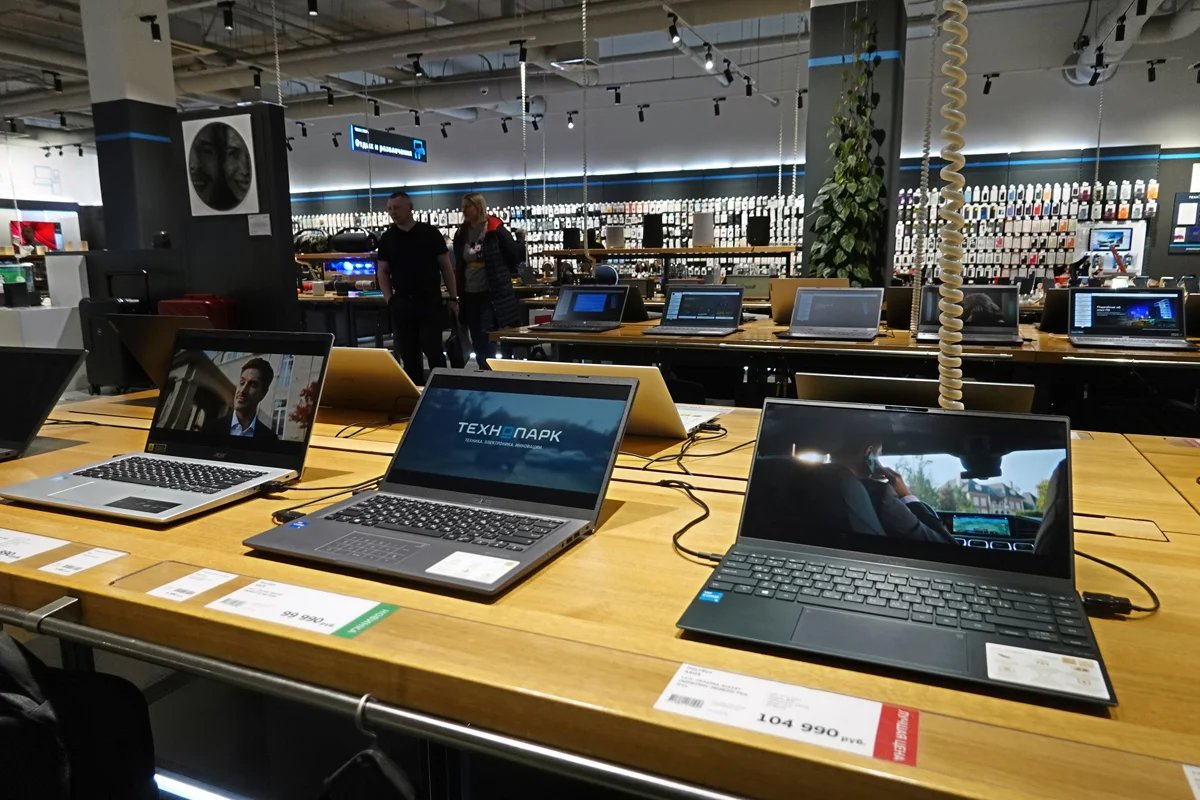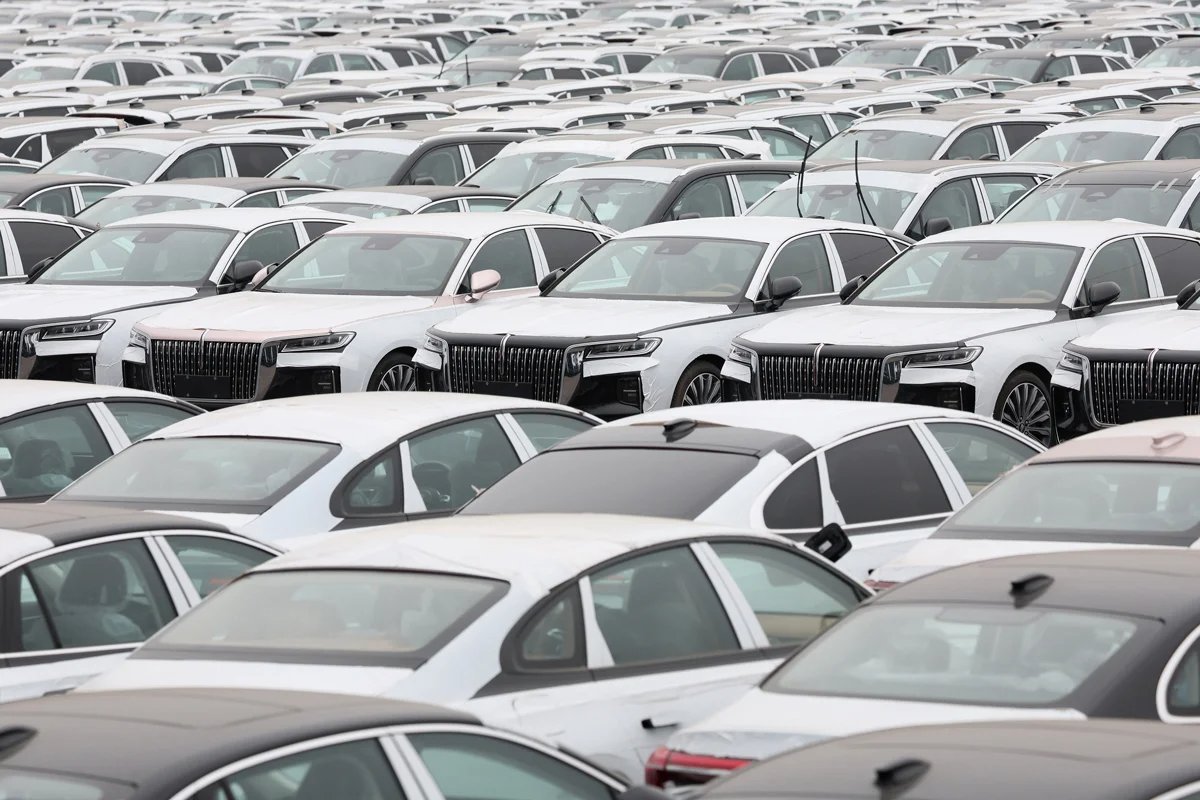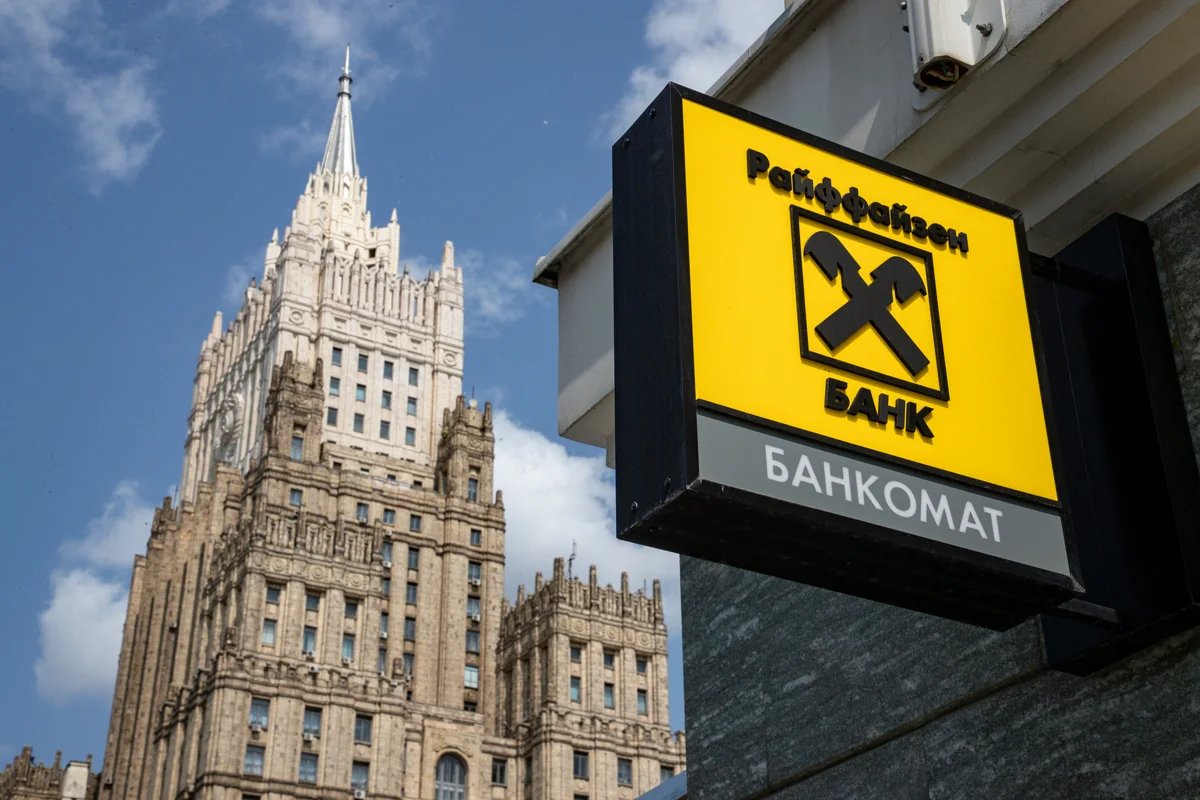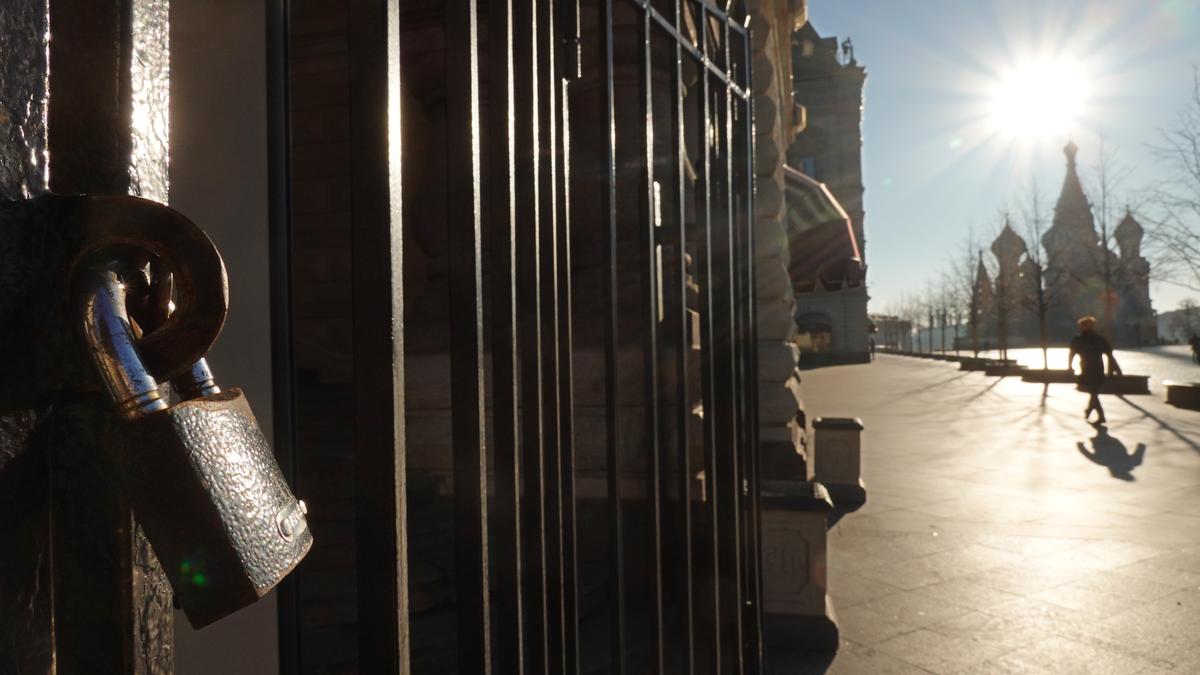Following his summit with US President Donald Trump in Alaska last month, Vladimir Putin said that he had proposed the resumption of economic ties between the two countries. So how many American companies actually left Russia after the invasion of Ukraine, who stayed, and who might be willing to return?
During his brief visit to Anchorage in August, Putin said that Russia and the United States had “something to offer each other” in terms of trade, and that if the US was keen, he would “look forward to working together”, to which Trump appeared to agree.
A mass exodus of Western companies from Russia began within hours of the country’s invasion of Ukraine in February 2022. The rate of corporate withdrawal was at its highest during the first year of the war, before the Kremlin was able to tighten the rules governing when foreign entities could sell or close businesses in Russia.
During that time, some 100 US companies exited the Russian market, according to Leave Russia, a campaign group monitoring corporate withdrawals from Russia run jointly by the Kyiv School of Economics and a team of Ukrainian IT professionals. Since Trump’s return to the White House, Russian state media has been awash with rumours that the return of Western brands and consumer goods is imminent.
In reality, US companies are far from standing impatiently at the locked gates of the Russian economy waiting for them to open, Elina Rybakova, a senior researcher at the Peterson Institute for International Economics, told Novaya Europe.
“There will be no big return,” says Rybakova, adding that foreign companies began experiencing legal trouble in Russia long before 2022, the most famous cases being the squeeze on Shell’s Sakhalin-2 project, the criminal case against American businessman Michael Calvey, IKEA’s land disputes and corporate conflicts over the assets of British oil giant BP and its problems with Russian oligarchs.
Every year, foreign companies have faced fresh complications which they were willing to endure for the sake of profit, says Rybakova, adding that there was “so much money to be made in Russia that it more than covered the costs of solving problems.” However, those days are now over, and since the start of the war, the rights of “unfriendly” investors to manage businesses without interference by the Russian state have been severely curtailed.
Leave Russia says most US companies operating in Russia when the war started have retained a presence in the country in one form or another, whether that be business as usual or on a smaller scale. Only about 13% of American companies exited the Russian market entirely, which is comparable to the figure for other major “unfriendly” economies.
By compiling its own list of the 70 largest US investors in Russia at the start of the war, Novaya Europe has determined, based on data provided by Leave Russia, that approximately a third of them are still working in Russia today.
Behind the Iron Curtain 2.0
IT was the highest-profile sector to abandon Russia en masse when the war began. The largest companies in terms of revenue earned in Russia in 2022 were Google holding company Alphabet and Apple, followed closely by Hewlett-Packard, Xerox, IBM, and Dell. The second major group was manufacturers such as Levi’s and Reebok, which closed their stores, and Whirlpool, which sold its Russian refrigerator and washing machine factories.
A return of tech companies now seems unlikely, as Russia is in the process of replacing foreign tech brands with homegrown products. Its attempt to bring down a digital Iron Curtain means that the authorities are unlikely to welcome back global tech giants such as Alphabet and Apple.
However, Russia increasingly requires certain electronic components, such as microchips, which, according to Rybakova, are currently being sourced indirectly using “murky import schemes”.

Russian-made laptops on sale at a Moscow electronics shop, 23 March 2022. Photo: EPA / Maxim Shipenkov
Moreover, the Russian military-industrial complex needs chips. According to market data from 2024, the unofficial import of Intel and AMD processors increased by almost a third last year. But even if the relationship between Moscow and Washington does soften, “it would still be very difficult to say to Intel, ‘Come to Russia and supply the defence industry’”, says Rybakova, adding that even in the best of pre-war times, something like that never happened.
According to two Russian economists who spoke to Novaya Europe on condition of anonymity, Western manufacturers of electronics, clothing and footwear, and household appliances have little interest in the Russian market at present for two simple reasons — the fall off of Russian consumer demand in these sectors, and high Russian interest rates, which have made it very expensive to borrow money. Likewise, Rybakova says that nobody is expecting there to be a repeat of the consumer boom of the noughties.
Engineering a return
By contrast, three major manufacturers of agricultural machinery that exited Russia in 2022 — John Deere, Caterpillar and AGCO — would “be back at the drop of a hat,” according to an anonymous sector analyst who cited the attractiveness of the Russian market to these firms, as well as their determination not to lose any ground in Russia to Chinese manufacturers.
Nobody is expecting there to be a repeat of the consumer boom of the noughties, says researcher Elina Rybakova.
There is also Ford, which first opened a plant in Russia in 2002 only to close it again in 2019, before the full-scale invasion of Ukraine, simply as it was unable to compete with other low-cost vehicle manufacturers in the Russian market.
Ford is unlikely to take advantage of its option to buy back its stake in Russian joint venture Ford Sollers, one Russian car market analyst told Novaya Europe anonymously. Even if Russian consumers no longer want to buy Chinese cars at exorbitant prices and are hungry for quality models, the Russian market is currently unsuitable for localising production. “It is completely impossible with the current economy. Profit does not make up for instability,” the analyst warned, adding that the Russian automotive industry required “stability”.
Waiting it out
Last year, Novaya Europe investigated which foreign companies had decided to stay in Russia and identified two main strategies they employed: “waiting silently” and “promising to leave but not leaving”. Both were roughly equally represented in the American investors on our list.
Companies that at best merely expressed concern about Russia’s invasion of Ukraine, if that, “waited silently”, some of them even saying openly that they would carry on working in the country. Among them were six major American pharmaceutical companies, including giants Johnson & Johnson and Pfizer.
As medicines and medical equipment were exempt from international sanctions on Russia, all six companies chose not to give up on a huge market, and even though they stopped running clinical trials and investing in marketing in Russia once the war began, they continued to sell medications.
Two leading oilfield service companies also chose to wait silently. According to the Financial Times, 4% of SLB’s global revenue comes from Russia, while for Weatherford it’s 7%.

New cars for sale at a Moscow region dealership specialising in Chinese brands, 11 February 2025. Photo: EPA / Maxim Shipenkov
There were also those who promised to sell up and leave Russia but didn’t. These were first and foremost the world’s largest manufacturers of beverages, food and cigarettes. Companies such as Mars, Procter & Gamble, Mondelez and Philip Morris all issued similarly noncommittal statements outlining vague plans to suspend their Russian operations in the early days of the war, but none of them has to date exited the country. Sanctions do not apply directly in their case, and they have already invested too much money in winning over Russian customers to leave.
Both food and medicine are highly competitive sectors, in which competitors will immediately replace any company that leaves a market, which makes it unsurprising that 23 of the 27 American companies on our “promising to leave without leaving” list operate in these two areas.
‘Waiting silently’ didn’t help
The authorities have already seized the assets of two US investors in Russia, while a third company is currently being threatened with asset seizure.
Waiting silently didn’t work out well for food producer Glavprodukt, which was owned by US company Universal Beverage. The manufacturer was accused of withdrawing 1.4 billion rubles (€14.9 million) from Russia, bypassing financial restrictions imposed after the outbreak of the war, and was promptly nationalised. The move occurred at the height of the Putin-Trump bromance, and though US Secretary of State Marco Rubio promised to raise the case in future negotiations, to date no steps towards restitution have been taken.
JPMorgan Chase, which alongside Citigroup was one of the few Western financial corporations still working in Russia by early 2022, opted to try the same strategy. As a result, its subsidiary J.P.Morgan is now at risk of being nationalised, and is currently being sued for almost $440 million by Russian state-owned bank VTB, which also wants to seize its assets.
Foreign banks such as Austria’s Raiffeisen, Italian banks UniCredit and Intesa Sanpaolo, Dutch ING, American UBS and Hungary’s OTP, are also interested in maintaining a presence in Russia, as it’s possible to make so much money there, according to Rybakova. But due to the pressure exerted on foreign companies by the Russian authorities and the difficulties inherent in divesting assets and leaving the market, their money is locked down in Russia, she adds.
Another case of confiscated assets concerns ExxonMobil — once one of the largest foreign investors in Russia, which invested billions in oil production on Sakhalin. Putin first took its business, handing the Sakhalin-1 oil and gas project to a specially created Russian operator after ExxonMobil, which had been running it, announced its withdrawal from Russia, writing off losses of $2.4 billion.

A Raiffeisen Bank ATM against the façade of the Russian Foreign Ministry in Moscow, 21 August 2023. Photo: EPA/Yuri Kochetkov
The Russian authorities threatened to sell the company’s 30% stake in Sakhalin-1, but then the Kremlin delayed the deal for three years. Shortly before last month’s summit in Alaska, Putin signed a decree creating a loophole through which the company could return to the project, albeit with a twist — it would first be obliged to publicly come out in favour of lifting Western sanctions in Russia, or as independent energy expert Tatiana Lanshina describes the situation: “Moscow sets almost impossible conditions, while formally inviting them back.”
Are there deals to be made?
As companies that exited the Russian market in 2022 in most cases wrote off significant financial investments, most will be reluctant to return until the political situation in the country changes dramatically, the war ends, and negotiations on a new détente and the lifting of sanctions begin.
A large-scale return of US businesses to the Russian market is therefore unlikely, given the lack of due process companies can expect and the instability created by the absence of fair arbitration processes or the rule of law. “Taxes or the conditions for foreign investors could change at any time, and returning to Russia could also have an enormous detrimental effect on a brand’s reputation,” Lanshina says.
Despite the risks inherent in its post-communist economy, Russia managed to attract investment from major global corporations in the 1990s
Whether the Kremlin manages to prove to American companies that it is ready to offer favourable conditions and to guarantee long-term stability is another matter altogether. Both sides have talked about “deals of the century” in the field of rare earth mining, for example. Indeed, Trump considered offering Moscow a deal on developing rare earth deposits in Alaska, while Putin proposed not only working together on Russian deposits, but also on those in Russian-occupied parts of Ukraine.
Despite the risks inherent in its post-communist economy, Russia managed to attract investment from major global corporations in the 1990s by drawing up a Production Sharing Agreement (PSA), a key element of which was a pledge by Moscow not to change the rules of the game down the line.
Unfortunately from Moscow, this is the kind of pledge a country can realistically only make once, and foreign investors are unlikely to set much store by a similar document today, given that Shell and ExxonMobil, stakeholders in two of the largest PSA oil and gas projects in Russia, lost billions of dollars within months of Russia’s invasion of Ukraine.
Join us in rebuilding Novaya Gazeta Europe
The Russian government has banned independent media. We were forced to leave our country in order to keep doing our job, telling our readers about what is going on Russia, Ukraine and Europe.
We will continue fighting against warfare and dictatorship. We believe that freedom of speech is the most efficient antidote against tyranny. Support us financially to help us fight for peace and freedom.
By clicking the Support button, you agree to the processing of your personal data.
To cancel a regular donation, please write to [email protected]

